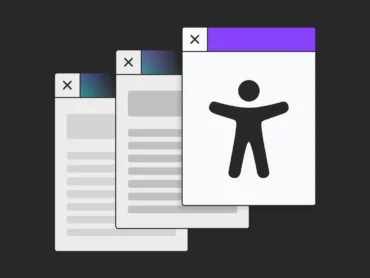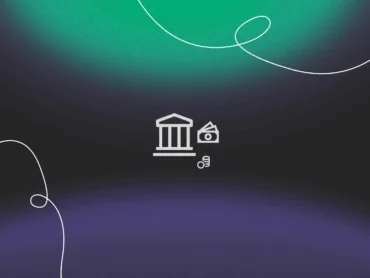3 Important Stages of Communication in the Process of Web Development Outsourcing

Going with the website development outside your company is not only a solution but a business process. Yet outsourcing, especially to another country, is somehow still perceived as a sign of the company’s weakness or, worse, an act of desperation. This is surprising, owing to the fact that the advantages of web development outsourcing are generally known but perhaps seldom discussed in detail. When we spend a thought on this, we’ll figure that outsourcing has a long track of benefits related to every business discipline.
But what happens when we finally decide to outsource and is there really anything to fear of?
I can imagine that most of us heard about cutting on costs and great quality mentioned in the same breath with the exceptional expertize from the external manpower. All often impossible to reach from where we are headquartered. For sure, sending a website project to the new team can be stressful. Not only should you meet people that you will shortly need to trust but also you have to face a couple of barriers that look tough at first. Among them are language, cultural gap and still unverified external performance. It’s natural that before making any move you will look for areas where things can go wrong – starting with communication.
Stage 1: Project Scope. Getting All Bits and Pieces Together
Once in a while, I’m being asked about our language competencies. In the end, no one likes to be misunderstood. Do potential clients want to know if I mumble or have any other speech problems? No. Specifically, they ask questions about the ability to express doubts, requests and recommendations. In short, they’re looking for a partner that will respond to their scope of work in the most fulfilling way.
At this point, I don’t mean the business jargon that we sneak into our emails to look smart. Sure, reading familiar phrases coming from the other side of the globe is reassuring. But in the case of website development, it is more about transparency than picking the best buzzword. It is no surprise that in recent years there has been so much stress put on the collaboration tools. For example, whatever you use daily, let it be Asana or Invision, each has a well-developed comment mode. It’s there so you could better organize your workflow. This translates into the following:
- Seeing contractors as an extension of your own team. Its members use the same software which helps them keep the communication balance and integrate easily
- Combining text plus images to prepare the most exhaustive documentation
- Building visual feedback by pointing and clicking on the design elements that need clarification
Paradoxically, in this initial communication-barrier overcoming, the easiest stage is the first stage. It’s when we conduct the briefing according to a certain scenario. The one which is known and, to some extent, predictable for a specific kind of projects. Thus asking the right questions again and again or suggesting the best solutions works as a safeguard against mistakes – many of us make them throughout the next phases of the project.
Stage 2: Project Development. Leaving No Stone Unturned
When the website development starts, you have to make sure to get as many notifications about progress as you expect. They can take the form of emails sent regularly. It’s best to have them in the morning your time if you’re in a different time zone. Why? Because once you know that everything is moving forward intact, you can plan the rest of the day without looking back at your team.
Also, keep in mind, that email gives you only limited insight into what’s being done at the time. It is absolutely fine to hold regular meetings to talk to the managers about the status of development. However, if you have only limited time – it may make no sense to engage people responsible for the production into such conversations. If the roles are split – it is the duty of the manager to be well-briefed before every call.
Last but not least, you can follow how your website is shaping up based on the tasks. You can easily organize them using tracking tools. Sorting such tasks usually takes time. But with the list, you can review it at every stage of production. Furthermore, the revisions become more dynamic – you integrate it with your mailbox, add real-time work hours and leave comments.
Such detailed actions are sometimes impossible in case of emails and sprints. That is when information like to get lost, especially if the team counts several people – all actively participating in the development
Nevertheless, these channels have one important thing in common – they let you react as early as things start to go the wrong way, for example, when your contractors stop to perform. At this point, your time of reaction is crucial for at least two reasons.
- First of all, it lets you report the issues the moment they pop up – often when it’s still possible to fix them before no more serious harm has been done. By harm I mean the situation when the developer needs to rewrite the code to locate, fix the problem, and, consequently, waste precious time.
- Secondly, when you notice that nothing goes according to the plan, you should seriously consider moving the project from team A and to team B. Again, the closer your website is to the final, the more difficult it may become to make amendments.
For example, if certain elements of the backend integration have been neglected or the developers skip the viewport which they are supposed to cover. Sure, it’s often hard to change the agency. But if you decide there’s not much more to be done – the end should justify the means.
Stage 3: Project Feedback. Leaving a Lasting Impression Against the Odds
And here we’re coming back to the ability to communicate well. Because as far as you can be happy about the briefing and the development phase, it is the revision that many painfully slip on. Unlike these two, the feedbacking is when you really reveal your cards. Earlier, many could think that they would “figure things out” or push them one way or another, hoping that you would show a great deal of tolerance for just a few small oversights. By all means, feedback is the most spontaneous part of the project – you can’t really predict it in advance. However, what you can predict is the ability of the external team to respond to your comments with due diligence.
Be precise when reporting tickets. One or two sentences may sometimes be not enough for the other side to understand your intentions. To add a bit of clarity, always put your thoughts in context, such as:
- Hook up a page address on which the issue occurs
- Use simple tools to visualize your message, for example, Greenshot which lets you highlight selected parts of the screenshots and easily pass them in the teams
- Define the type of computer and browser in use
- Refer to the works that you or your team did in the past
The key in this is to leave as little space for guessing as possible. So, in addition, try to avoid using expressions such as “make it bigger”, “make it a bit brighter”, “move this slightly”. To express the features of elements it is better to use sizes – when asking for updates of typography or dimensions if you want to make changes to graphical elements. Carrying things this way will get you closer to a closed task and let the team work faster in the face of an upcoming deadline.
Be Prepared to Cooperate on Your Next Project
Certainly, there is a set of rules that both sides of the project need to follow to be successful before entering into partnership. Knowing how to approach the three phases of each project, can give you a better picture of what to expect from the 3rd party providers. Those rules, such as keeping clear and transparent documentation as well as building comprehensive feedback apply to the communication that is secured. Hope they will help you look at outsourcing from a different, more approachable perspective.


